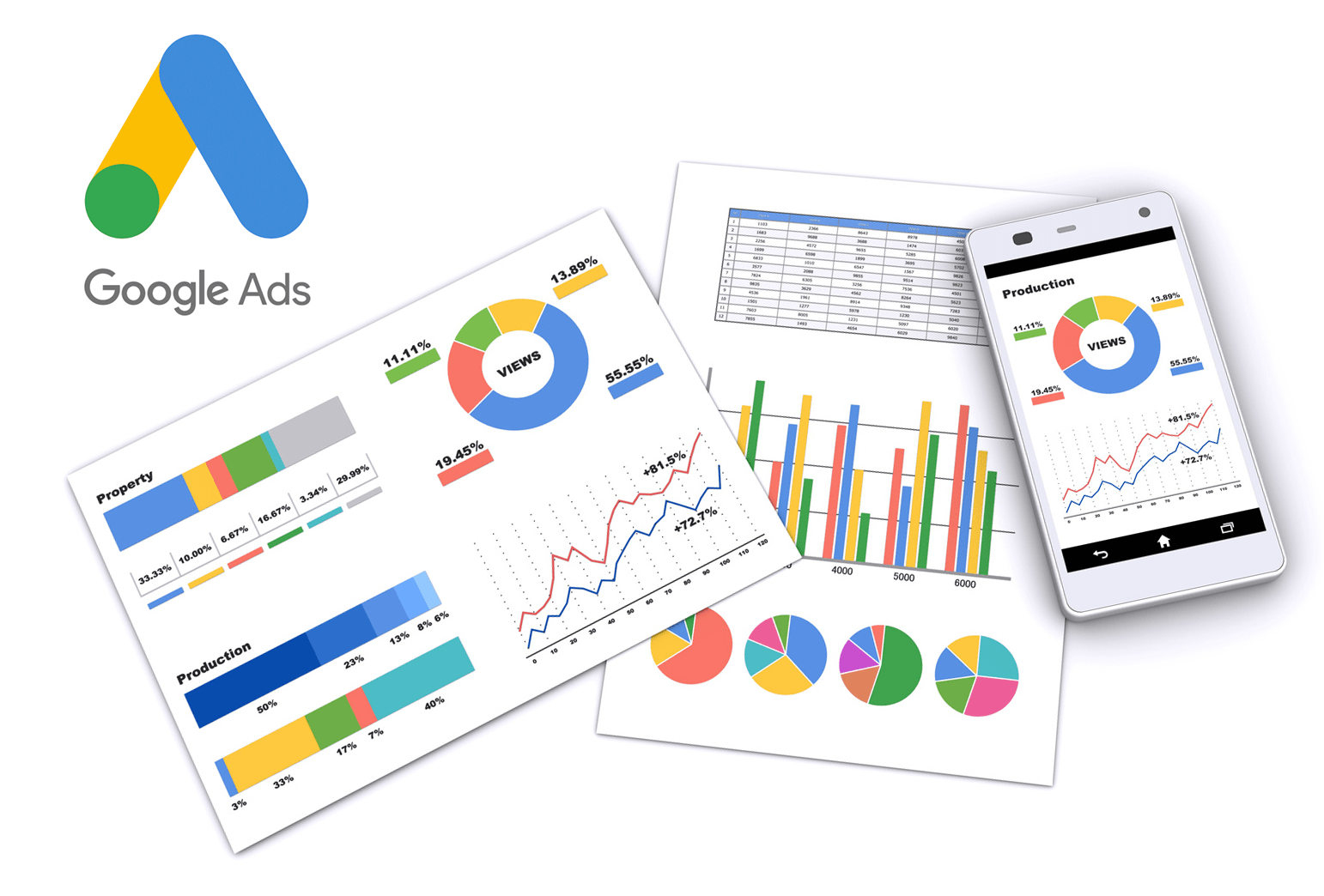Unlocking Apple Search Ads: Tips, Tricks, and Best Practices
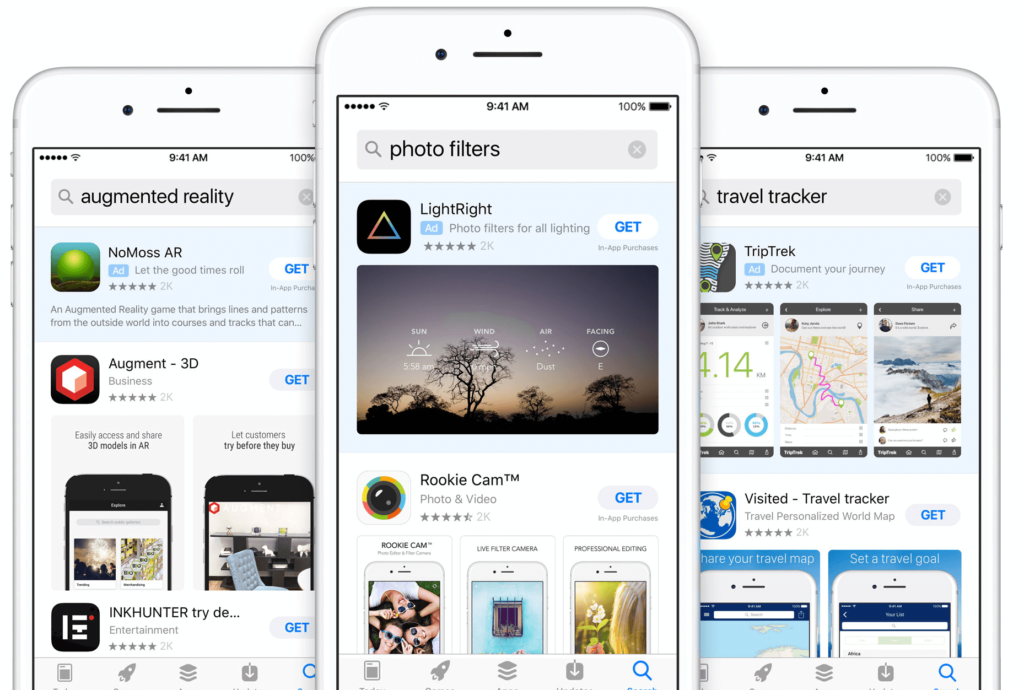
Apple Search Ads, besides promoting the sale of iOS apps on the App Store, serves multiple diverse functions. It does not just facilitate ads to feature on the apex of search results, magnetizing potential users, but also provides a platform for critical data collection, shields your brand against competing rivals and even augments positions in the App Store’s organic search rankings. Discover everything you need to know about it in this comprehensive article.
Top Positions and 4 other reasons to try Apple Search Ads
Indeed, the primary expectation of an advertiser who invests in paid placement is to witness their application dominating the top search results. Numerous advertisers have appreciatively realized the opportunity to gain high visibility at quite an economical cost, even concerning high-search-volume keywords. But what other enticing aspects does Search Ads offer advertisers?
High Quality Traffic
App quality assessment can be measured by tracking conversion rates and user interaction within the app. On the topic of conversion rates, data directly from Apple Search Ads reveals that approximately half of all app advertisement clicks result in the app being installed. The likelihood of an app installation following an advertising click increases when the user’s search phrase closely aligns with the app’s features.
Speaking of user interaction within the app, statistics show that user engagement levels are consistent irrespective of whether users discovered the app through Search Ads or from an alternative source. Additional evidence of high-quality traffic is the return on investment (ROI) obtained. In a report by Singular, Apple Search Ads were ranked 4th in ROI for game-centric applications, and it held an unrivaled 1st position for productivity applications.
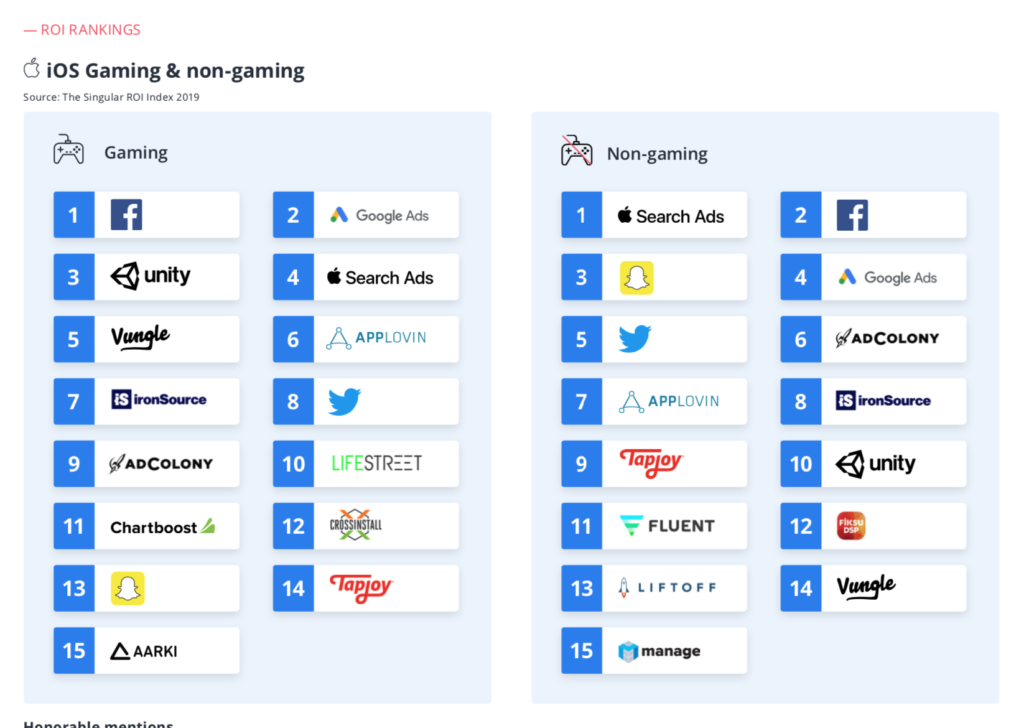
The quantity of spending required to draw meaningful traffic to your app is dependent on several factors. These include the nation targeted, the app’s category, specified features of the target demographic, and popularity of the associated search term. For an overview and to assist in budget allocation, we’ve shared some charts from SearchAdsHQ in the sections below.
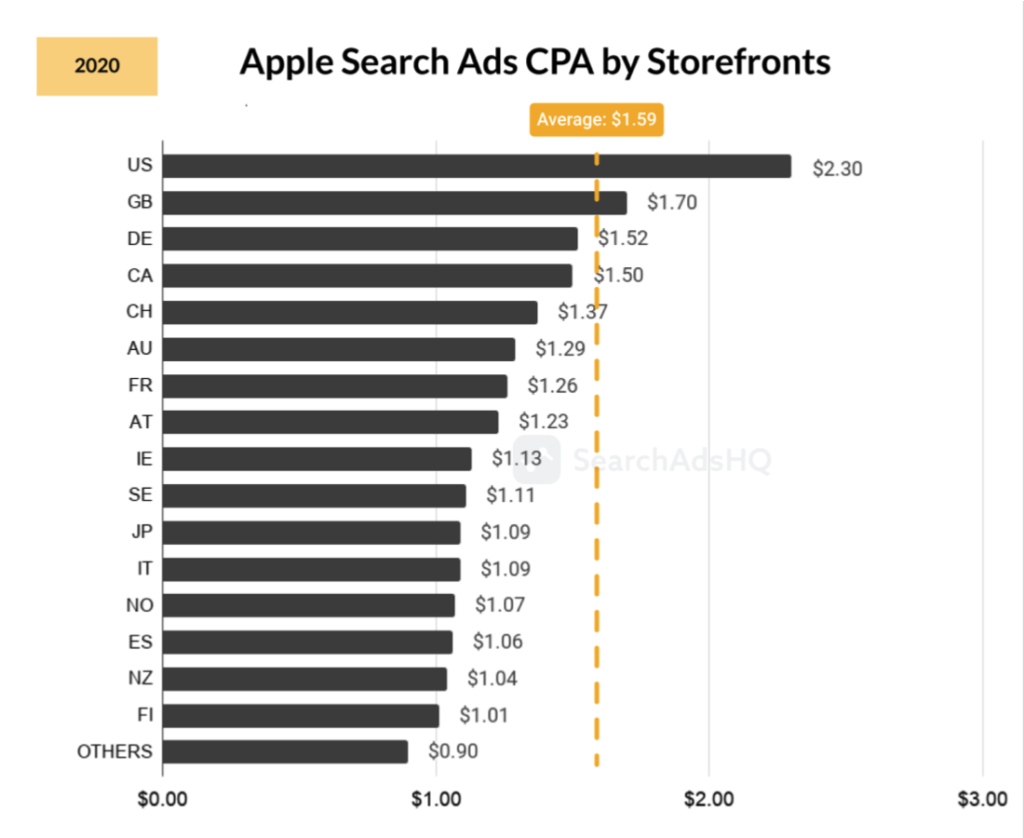
As evidenced by the charts, the United States and the United Kingdom continue to top the list as the priciest nations for advertising. The “Sports” category stands out as the most costly, with an average price of $17.41 per app installation. Conversely, categories like “Music”, “Utility”, “Photo and Video”, or “Weather” tend to sit at a more affordable range around $1 per app installation.
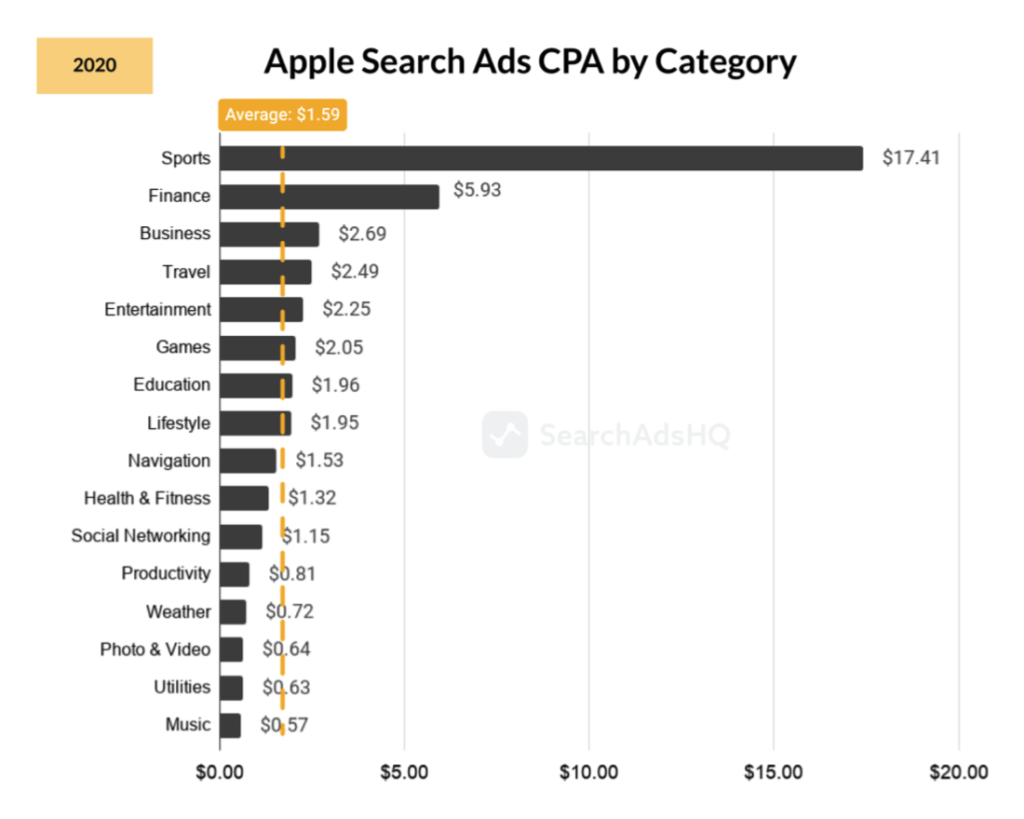
A Sizeable Volume of Traffic
With an approximate yearly income of $2 billion from Apple Search Ads, which incorporates around a billion downloads of advertised apps each year, this platform holds the 4th position in terms of revenue and popularity. It stands just behind powerhouses like Facebook Ads, Google Ads, and AppLavin. It’s imperative to highlight here that the platform specifically targets Apple device users who utilize the App Store search knowing exactly what they require. Unlike Facebook that primarily targets users who are casually scrolling through their news feed.
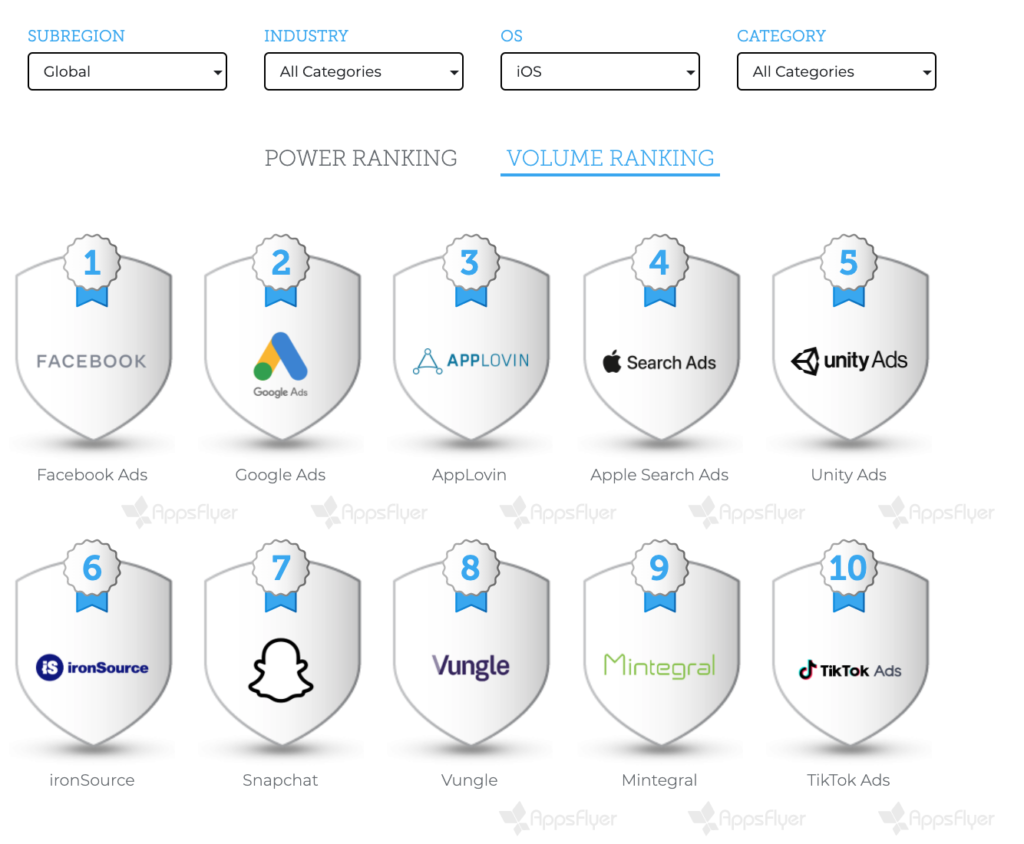
Useful Data
Exploiting the full potential of Apple Search Ads goes beyond simply gaining impressions and driving app installations; it also means leveraging its vast amounts of insightful information, encompassing:
- Trendy search phrases suggestions: Apple introduces relevant search queries that are expected to yield at least 11 impressions for any given application. A popularity ranking for each query is also provided for the developers’ convenience.
- Essential search query metrics: Apple Search Ads provide access to the number of conversions acquired from each used phrase viewable in the advertisement account. Additionally, one can look into different types of conversion ratios such as TTR (tap-through ratio) or CR (conversion ratio). An extended scope of conversion types is available through the Search Ads Attribution API, with the inclusion of observable purchases, trial engagements, and various other events.
- Detailed audience analysis: As part of improving ad quality, Apple Search Ads provide a comprehensive study of the target audience. It helps classify audiences based on specified segments, analyze geographic and demographic conversion forms and examine ad exposure patterns based on scheduled timings.
- Enhanced screenshot utilization: The unique feature of Apple Search Ads, the ‘Creative Sets’ option, enables the addition of screenshots to App Store search result creativity. This not only brings extra attractiveness and relevance but also facilitates the testing of different sets of images for effectiveness and informative content.
Possibility of Brand Protection
Approximately more than 90% of searches conducted on the App Store, spanning a vast array of subcategories, generally revolve around brand-centric queries. This pattern extends beyond the scope of ad networks, where brand-name searches usually serve a crucial role in enticing prospective customers. This strategy is not solely confined to promoting your own brand – it embraces other brands as well. As such, zeroing in on your brand name as a search term effectively reduces the propensity for traffic diversion to rival entities.
Apple Search Ads fundamentally emphasizes on catering to the users’ preferences. This platform was ingeniously designed with the prime objective of assisting users in discovering new, superior-quality, and beneficial applications. Essentially, the advertising aspect embodies a form endorsement from the service, urging installation of a specific app.
This underlines the necessity for advertisers to devote considerable focus on ensuring the relevance of their applications to the inclinations of their users. We shall delve deeper into the concept of prime-quality advertising adjustments shortly.
Preparing and Launching Advertising on Search Ads
Calculating a Test Budget
It should be noted that the amount expended on ads will certainly be influenced by factors such as the app’s category, the country it’s being marketed in, and the specific audience demographic. Imagine you’ve developed an edutech app (for context, the average cost per click in the Education sector is approximately $1.96) and it’s being promoted within the United States and Canada. In this scenario, our goal is to determine the ROI from 10 searches each for male and female users.
The first step is to identify which ‘events’ are likely to generate revenue. We’ll assume in this case that revenue is primarily derived from course subscriptions, which are chosen by around 5% of the app’s users. To accurately gauge the advertising budget, you’ll require at least 50 such events that generate revenue.
To achieve these 50 income-generating events, the app would need 1000 installs – this figure is obtained by dividing the 50 subscriptions by the percentage of user subscriptions (5%). Assuming we’re targeting two countries, using 10 search phrases, and encompassing two user groups (male and female), we will have 40 distinct segments, each of which requires 1000 installations. So, with 40,000 installations at a rate of $1.96 per click, the total comes to a substantial $78,400.
But what if your testing budget falls short of this calculated amount? Here are a few potential solutions:
- Running ads in countries where the cost of conversion is lower.
- Diminishing the number of segments being tested, this could involve reducing the variety of search phrases.
- Decreasing the number of anticipated actions and events, potentially to 20-30.
- Identifying priority combinations of countries and keywords and starting tests with these.
All of the listed alternatives represent a balance of reduced expenditure against lower quality testing. That’s why it’s crucial to weigh each tactic before making a decision.
Advertising Structure
Operational tasks in Apple Search Ads can be executed under two distinct account configurations – basic and advanced. The advanced option typically garners more favor due to its voluminous metric offerings. Its structure stands parallel to renowned platforms such as Facebook Ads and Google Ads, yet, it carries its exclusive peculiarities. It comprises of campaigns, ad groupings, search terminologies, negative keywords, and sets of screen captures. These campaigns can be conveniently assembled based on your predetermined advertising tactics.
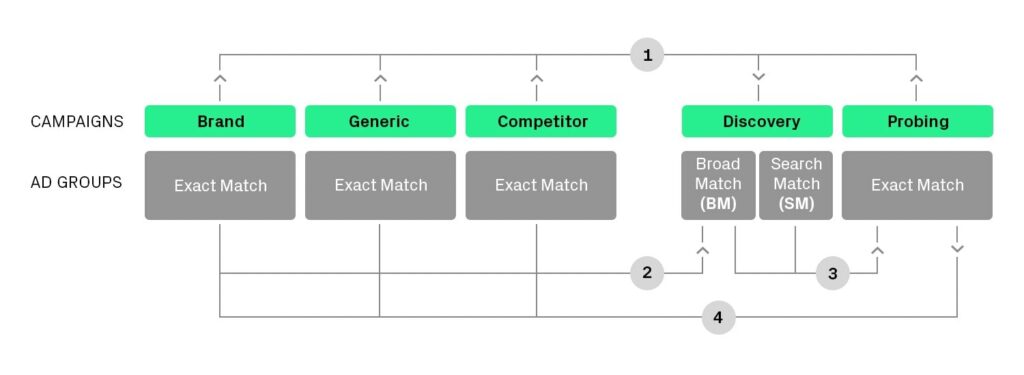
Here are a few suggestions for assembling your advertisement structure:
- Launch separate search campaigns for each geographical sector if your target market includes diverse areas like the USA, Canada, and the UK.
- A dedicated ad group for each audience fragment is a commendable strategy.
- Incorporating the complete collection of key phrases into each formulated group is vital.
Preliminary data is quite extensive, and it’s crucial not to overlook anything. There exist two alternative modes of structuring:
- The first is the Standard method, in which campaigns are at the apex, under them are the ad groupings, and lastly, we have keywords. In this scenario, advertising activities are predominantly manual, utilizing the automation features that are bound to the ad account. The standard structure is useful when the number of segments is relatively low. The major downsides are the heavy workload of mundane tasks and the lack of analysis capabilities for each demand.
- The second option is SKAG-based, where the foundation is laid around keywords, and each ad group houses a unique search term. Much like the previous model, data is accumulated at the group level, signifying the potency of various key phrases. This account organization permits the use of negative keywords, impression schedules, conversion costs for each demand, and the creation of group level charts for every request.
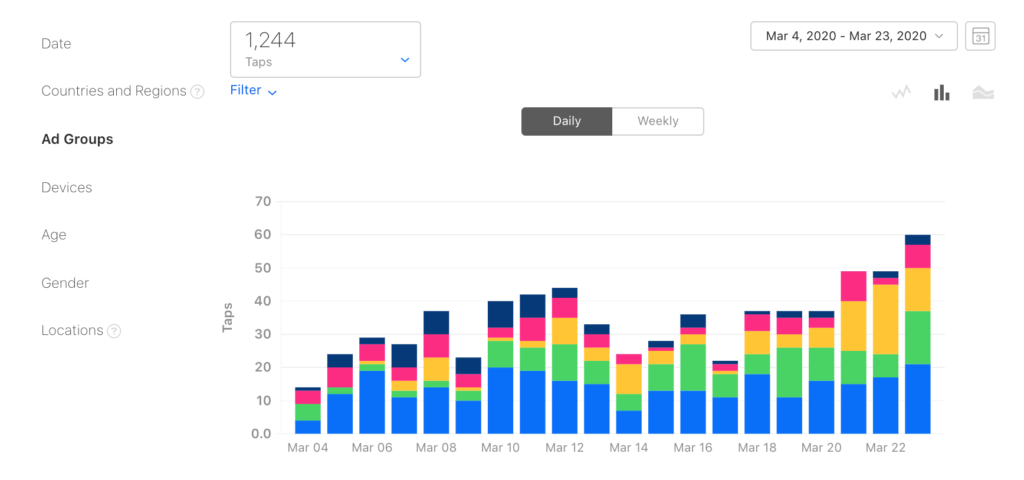
What is automation and what is it for?
An advertising account’s upkeep can be streamlined utilizing a key query and search database. This database not only contains search terms but also encompasses crucial performance metrics, facilitating ideal bid computations. Primarily, the bid optimization process entails stages like data aggregation, predicted conversion computations, bid calculations, and updates. Once this loop ends, it resumes from the start once more.
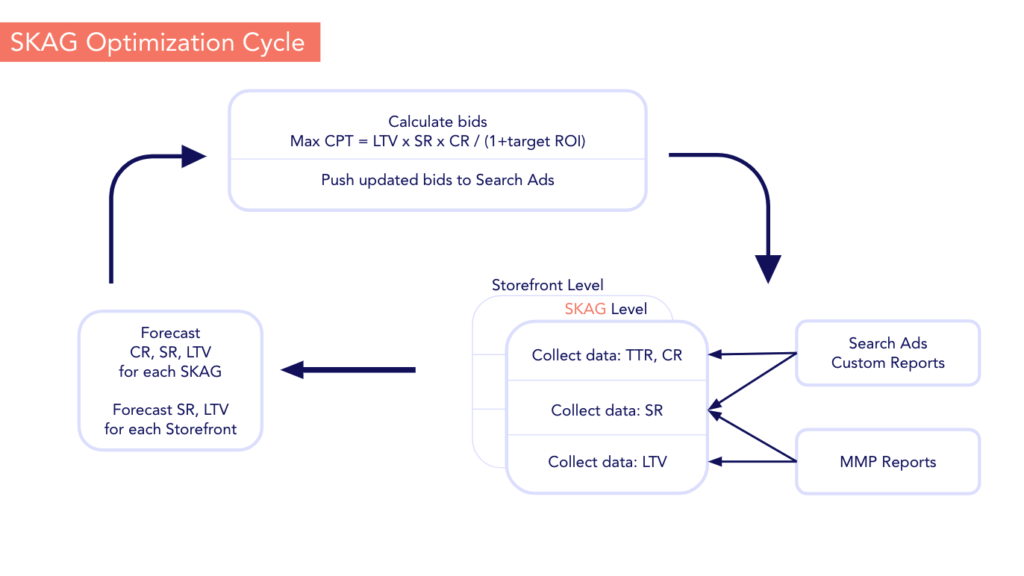
Automatization benefits include facilitating optimal account structure, the autonomous collection of keyword data, appending negative keywords, en masse bid modifications, traffic monitoring, and report generation.
How to Scale Advertising in the App Store
One of the most straightforward methods to boost your traffic is by amplifying your bids. However, this isn’t going to be our focus, as it often results in elevating the budget and shifting the return on investment.
Alternatively, adopting a steady and flexible strategy can yield better results:
- Incorporating relevant keywords. This strategy can amplify the install count.
- Switching the bid price in support of more high-converting keywords. This approach delivers a slow and steady rise in conversion while reducing costs.
- Tuning your bids and the cost per conversion. The platform prioritizes apps that align with user interests, so spiking the conversion rate can win you more auctions, even with a minimal bid.
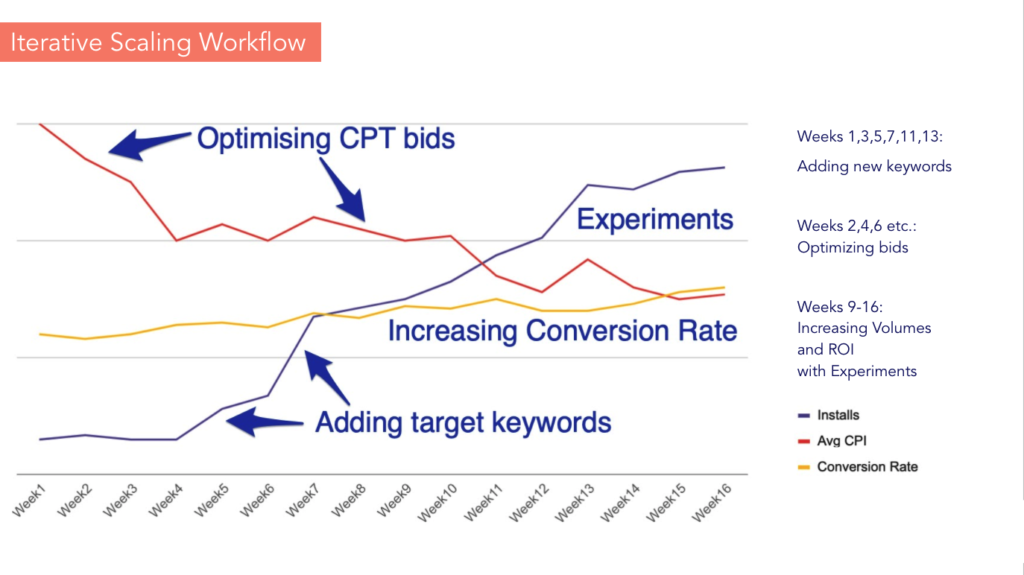
Here are an additional 5 strategies you can implement for scaling up:
- Launching Discovery campaigns to uncover fresh search inquiries.
- Monitoring the roster of countries where Apple Search Ads are operational. With a total of 60 countries, your audience might reside in unexplored territories.
- Experimenting with your bids by assigning a high CPC while mitigating your conversion cost.
- Investigating every closely-related query and deliberating about tweaking the product to better fit these.
- Enriching the app metadata with frequently-searched phrases.
Tasks that Apple Search Ads can take on
At its core, App Store advertising is about driving high-quality traffic. However, there are several other compelling benefits that can enhance your app’s performance:
- Using “Discovery” as your primary campaign type to uncover new, relevant search queries.
- Individually testing the conversions and ROI of specific search queries.
- Maintaining the traffic associated with brand-related searches and queries.
- Harnessing the power of the latest trending keywords to boost your traffic.
- Downloading and experimenting with unique screenshot sets for pertinent search queries.
- Customizing ads specifically targeted at users already acquainted with your app or developer.
- Elevating your app’s position in organic search rankings through user interaction from Apple Search Ads.
- Gearing up your product for launch; this includes starting advertisement for your app’s release even if it isn’t yet available on the App Store.
Apple Search Ads represents a comprehensive and well-designed platform for promoting your iOS applications. However, advertising on this platform requires a substantial budget and a considerable time commitment. Nevertheless, the outcomes are worth the investment.
Contact Me

